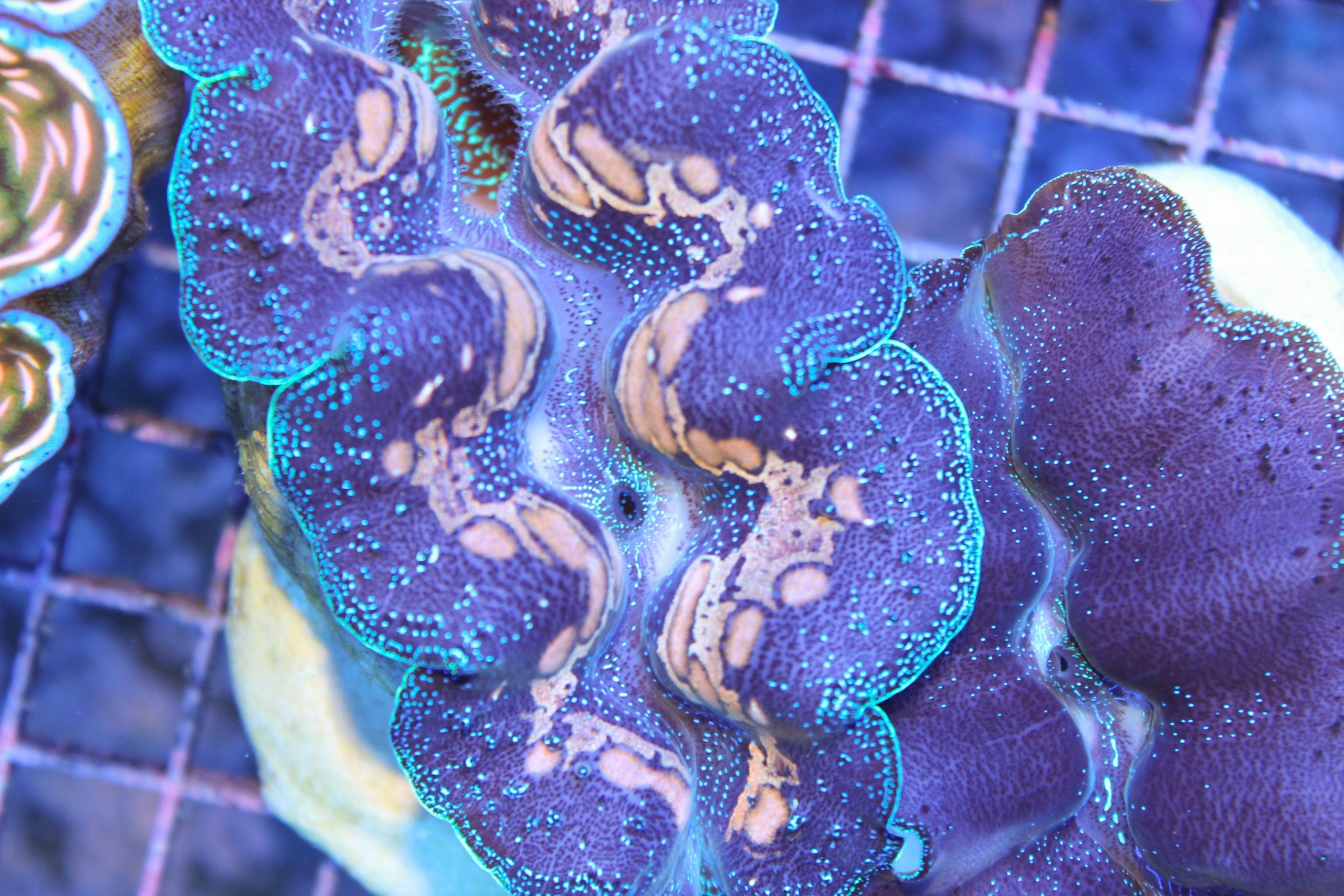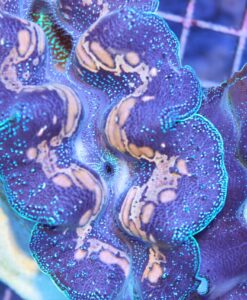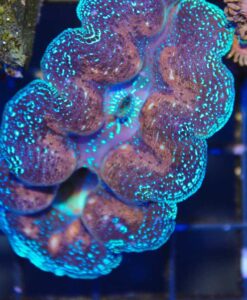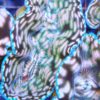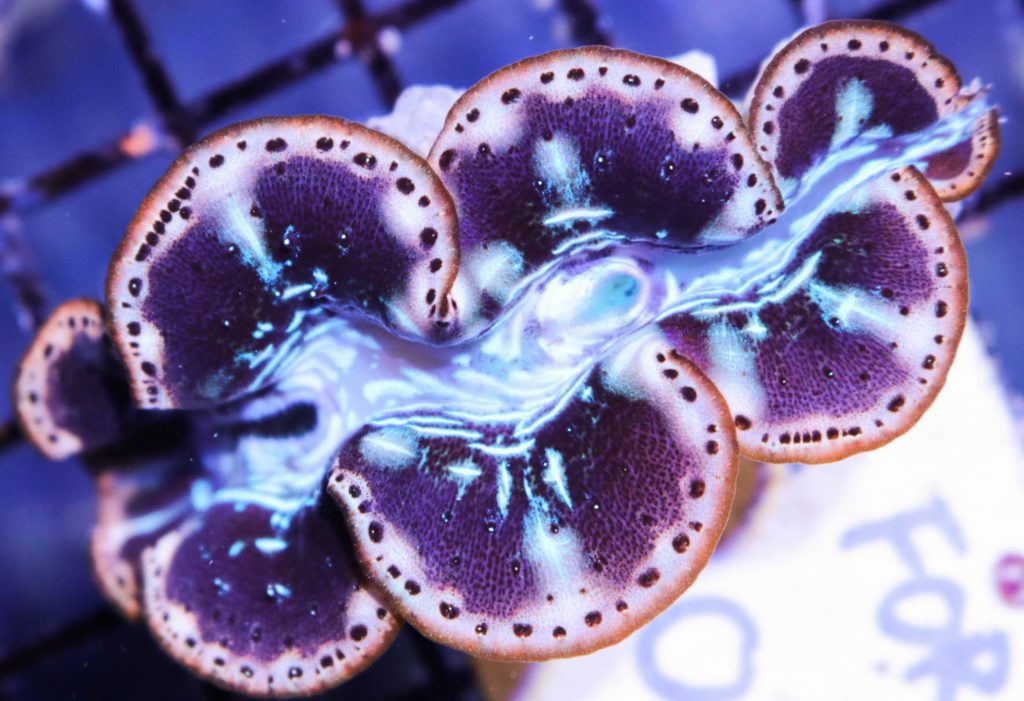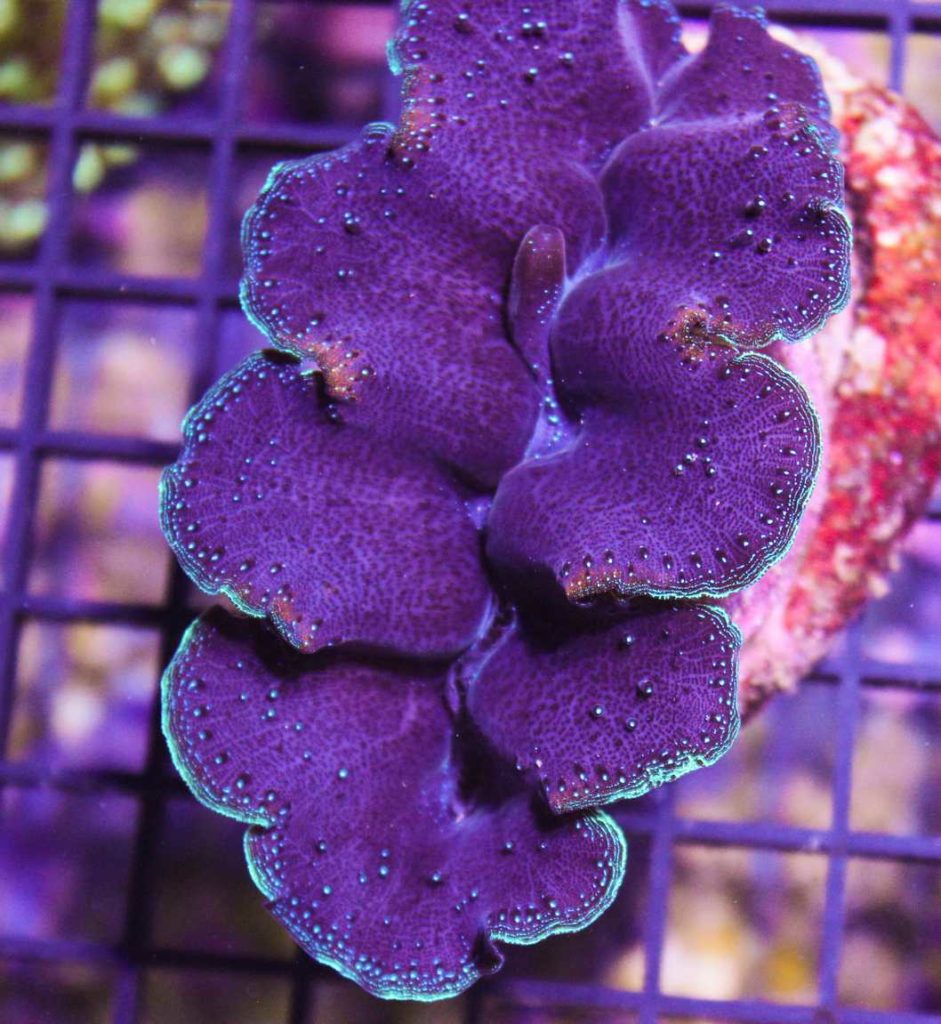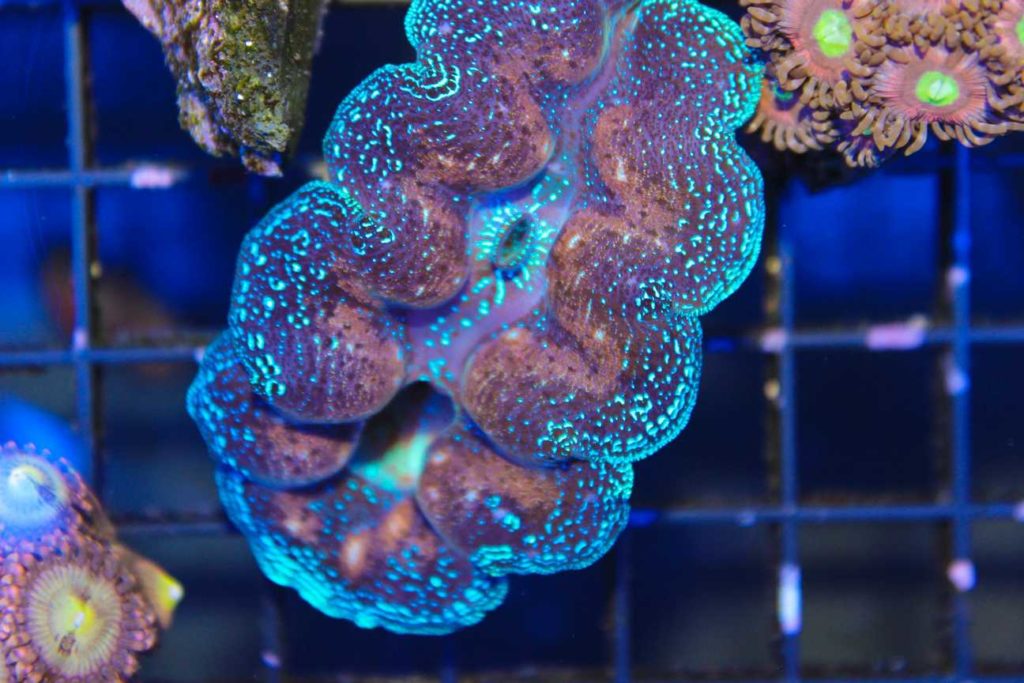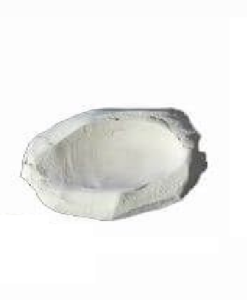Blue Crocea Clam
Crocea Clam
(Tridacna crocea)
Care: Moderate
Temperament: Peaceful (no sweepers or tentacles)
Diet: Filter Feeder / Photosynthetic
Purchase Size: ( we fill this in)
Max Size: ( we fill this in)
Water Parameters: Salinity 1.024-.26, Temp 77-78, ph 7.7-8.2
Population: (we fill this in)
Reef Safe: yes
Lifespan: 200 years in the wild
Breeding: Can be aquacultured but not by a hobbyist generally
Gender: Yes, but no visual clues. All clams are born male.
Drip acclimate
This smallest member of the “Giant Clam” family generally only grows up to a maximum of 6 inches in
captivity, making it a great addition to a home aquarium. They are also known as the Boring Clam or the
Crocus Clam. They are members of the Tridacnidae family and are one of the most common clams in
the hobby. They come in a wide variety of colours including blue, brown, green, orange and purple. The
predominant colour of most specimens is often blue or purple and they will often display a combination
of colours in their patterning. They have a striking mantle, often with contrasting colour patterns.
The Crocea Clam can be found in the Indo-Pacific region in the shallower waters of coral reefs. Since
they obtain the vast majority of their energy through photosynthesis they are more numerous at
shallower depths. In the wild, they will secrete an acid that allows them to borrow out a niche in
limestone rock or coral beds. This behaviour has led to one of their other common names, the Boring
Clam. In a home aquarium, they do best when placed on rockwork but can also be placed on the
substrate provided they receive enough light. They also prefer an area with somewhat random flow
with enough flow to keep the clam free of detritus but not enough to cause the mantle to fold over on
itself. They do best in a mature aquarium with stable water parameters. They do not have any specific
predators but some species of angelfish and wrasses may nip at their mantles.
Clearly the most compelling reason for keeping a Crocea Clam in a home aquarium is for its stunning
colouration. They are generally hardy provided they are housed in a mature tank with stable
parameters and make a great centrepiece specimen. If they are going to be placed high in a tank they
should be slowly photo adjusted by moving them slowly up the tank over the course of a few days or
weeks.
The Crocea Clam is photosynthetic and is able to obtain the majority of its needs from the tank’s lighting
but they are also filter feeders, which is why they prefer a mature tank. They can also be spot fed with
foods designed for filter feeders.
Most of the specimens available in the hobby today are aquacultured at ocean based farms.

